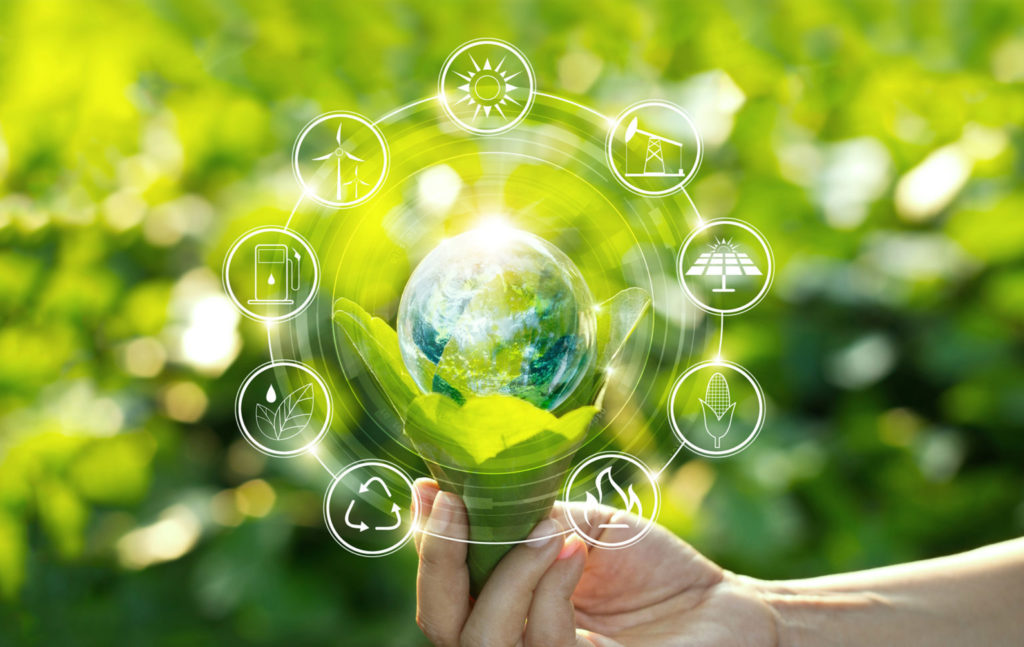Green, clean and renewable energy – What does it all mean?
Renewables are the cornerstone of the energy transition. This global shift is firmly underway, with renewable forms of energy playing a growing role in our daily lives. Seen as both sources of innovation and solutions to tackle global warming, green energy is being harnessed everywhere. It’s time to take a closer look at how far renewable types of energy have come.
Clean energy primer
Nothing is wasted, nothing is created, everything is transformed !
Unlike fossil fuels obtained from transforming elements buried deep underground, renewable energies will never run out. They come from natural sources that are constantly replenished and generate very little waste, which is why you’ll also hear them called “clean” or “green” energies. Tapped mainly from the Sun and the Earth, renewable energy can be classed in several sub-categories:
- Solar
- Wind
- Hydropower
- Biomass
- Geothermal
What types of renewable energy exist ?
As sustainable development and ecological innovation top the global agenda, renewable energies are increasingly a feature of our daily lives. But what are they exactly and why are they seeing such strong growth?
Solar energy : the highest profil
There are in fact two forms of solar energy: photovoltaic and thermal.
The Sun is a clean, non-polluting and unlimited source of energy — at least on human timescales — available all over the world. Today, we have three kinds of technologies to generate electricity and provide lighting and heating from solar energy:
- Solar photovoltaic (PV) employs solar panels consisting of PV cells that capture sunlight and convert it to electricity. This environmentally-friendly technology produces electricity for public solar streetlighting, traffic lights and small electronic devices
- Solar thermal converts solar energy to heat, which is then redistributed or stored for later use. A solar water heater uses this method to provide household hot water or underfloor heating.
- Solar thermodynamic also uses solar energy, which it first converts into heat and then into electricity. It employs a system of mirrors that concentrate the Sun’s rays to reach very high temperatures — up to 1,000°C — and generate steam that drives a turbine connected to a generator and thus obtain clean electricity.
Wind power: gaining force
Wind power relies on the force of the wind to rotate the blades of a turbine, which drives a generator to create energy. Once produced, this clean energy is then fed into the power grid. Wind power is very efficient, unlimited and generates little waste.
Hydropower: a long legacy
However, the main renewable form of energy is hydropower, first developed in France in the 19th century. The force of water stored in reservoirs behind dams or from ocean currents drives a turbine connected to a generator that produces electricity. Hydropower is currently the leading renewable energy in the world.
Biomass: the circular economy
Biomass — in other words, any organic matter derived from plants or animals — is another abundantly available source of energy. Such organic matter is recycled using a range of scientific processes — for example combustion, pyrolysis or methanization (aerobic digestion) — to produce biofuels, heat, biogas and electricity from biogas
Geothermal: deep inside the Earth
Geothermal energy captures the Earth’s heat to generate electricity or heat homes. There are three types of geothermal energy obtained from different depths :
- Very-low-temperature geothermal, extracted from low depth (200 metres). This technology is also used for geocooling in summer.
- Medium- and high-temperature geothermal concerns larger systems that extract heat from deeper layers down to 2,000 metres.
- High- and very-high-temperature geothermal is still relatively rare, as it requires hot rocks at depths of 2,000 to 5,000 metres.
Stepping up to the climate challenge
Renewable energies take centre stage
With human activities fuelling global warming, it is vital that we turn to new, cleaner and unlimited energy sources. Today, more-polluting and finite fossil fuels are still serving most of our energy needs, but they are gradually giving way to renewable energy.
Chief among these is hydropower, which now accounts for 19% of the world’s electricity. And on 28 June 2021, China began operating the second largest hydroelectric power plant ever built.

In Europe, renewable energies finally overtook fossil fuels last year, accounting for 38% of the energy mix, ahead of 37% for fossil fuels and the remaining 25% from nuclear power. This change results from lower energy consumption due to restrictions in response to the COVID-19 pandemic, but also from increased wind and solar power capacity.
This trend is being driven by Europe’s commitment to move towards a low-carbon future, with the aim of reducing CO2 emissions by 55% over 1990 levels by 2030.





